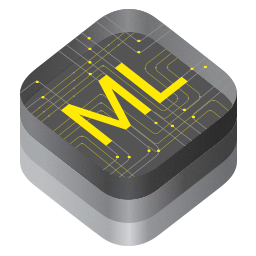Exporting Apple CoreML models using Keras and Docker

Introduction
Apple devices could be used to host machine learning models. In this article, we are interested in the deployment of deep learning models on Apple devices. While there are many online references on the matter, there seems to be little resources on getting the correct CoreML models from an existing Keras model. In this article, I present a docker image where model exports are simple and have no dependency conflicts.
Nvidia GPU on Docker
During the period of my master studies, I have been very interested in the use of Docker images in containerizing machine learning / deep learning training and testing. Nvidia GPU driver helped with bridging GPU device interfaces over from host machines to guest containers. In a previous post, I have shown how to containerize existing machine learning projects / models for use as a research ops tool (See Running Containerized OpenPose).
Here I also present a Docker image where Keras models could be trained using Nvidia GPU. These models could later on be deployed to Apple’s CoreML on Swift. For references on deploying CoreML models, the following links are a good start:
- Integrating a Core ML Model into Your App
- Converting Trained Models to Core ML
- Deploying to Core ML
- Running Keras models on iOS with CoreML
- Image Classification using Create ML, Core ML and Vision Framework in Swift
Keras & CoreML Docker Image
Understanding the Docker Image
The above image contains the following packages:
- Nvidia GPU
- Anaconda Python deployment
- Common Python ML Libraries (Sickit Learn, iPython, Cython, Jupyter)
- Deep Learning Libraries (Keras & Tensorflow GPU)
- Visualization libraries (Matplotlib, Visdom)
- Computer Vision libraries (OpenCV, Pillow)
In order to use the above docker file, you first need to build it as follows:
docker build -t my-image-name .
If you installed this docker image on a machine that already has a GPU correctly installed, when you SSH into the image, you should be able to see your GPU. In order to SSH into your image, you could do run the following snippet:
docker run -v $(pwd):/code --p 8000:8000 --runtime=nvidia --host=network --rm -it my-image-name bash
The above command does the following:
- Runs
bashon your built imagemy-image-name. --runtime=nvidiaallows the host to pass Nvidia GPU to the guest image.--host=networkallows your guest image to access the host network (i.e. for Visdom reporting or Tensorboard reporting to send training updates).--rmremoves the anonymous volumes attached to your container once/if it is removed (which helps consuming unneeded disk space).--itruns docker interactively (i.e. rather than a background daemon).-v $(pwd):/codepasses the current directory (on the host) to the guest under path/code.-p 8000:8000binds the host 8000 port to the guest’s 8000 port. That is helpful if you need to run jupyter from within your docker guest image.